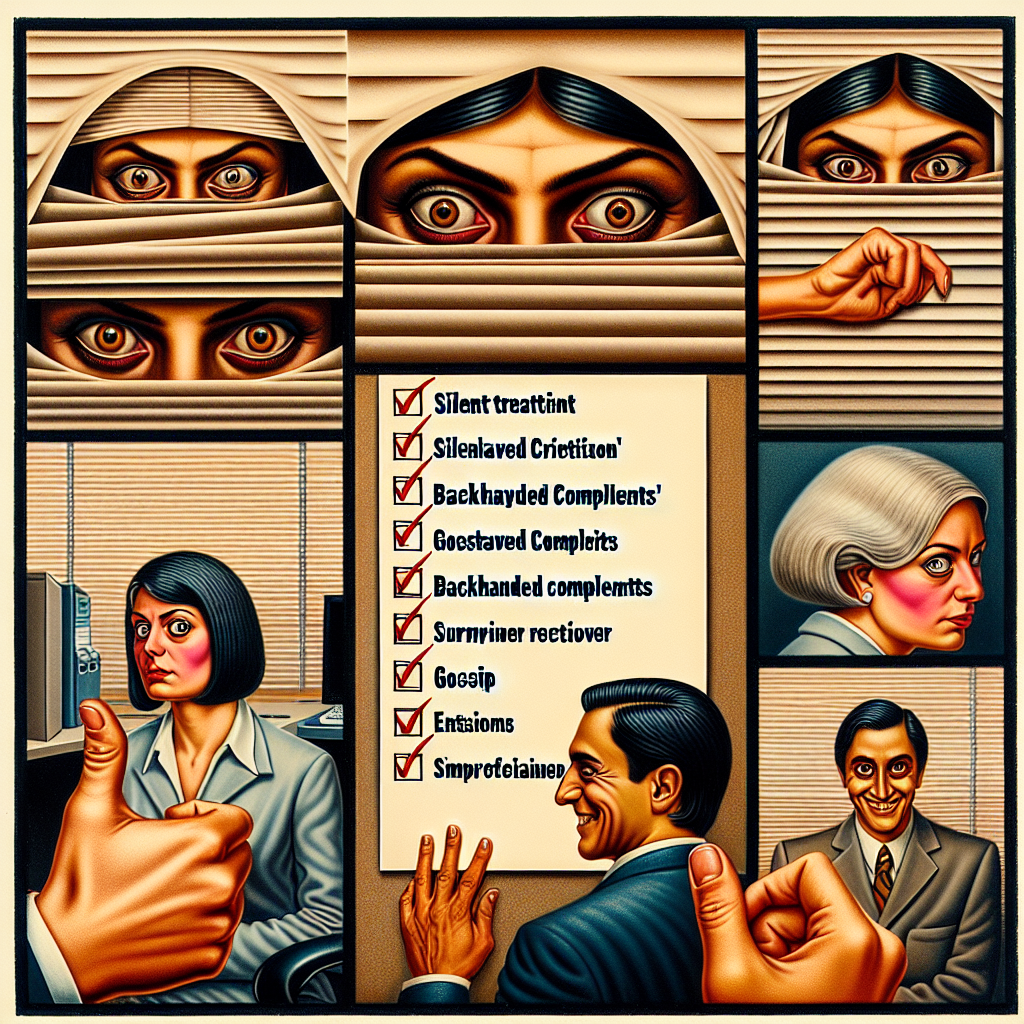Tips if you have a Difficult Boss
Navigating Workplace Challenges: How to Deal with a Difficult Boss


Introduction
A healthy work environment is crucial for job satisfaction and productivity. However, dealing with a difficult boss can significantly impact your well-being and performance. This guide aims to navigate these challenges and provide strategies for managing a challenging boss effectively.
Importance of a Healthy Work Environment
A positive work environment fosters collaboration, boosts morale, and enhances productivity. Conversely, a toxic atmosphere, often exacerbated by a difficult boss, can lead to stress, burnout, and decreased job performance.
Understanding Different Types of Difficult Bosses
Understanding the nature of your boss's behavior is the first step in managing the situation effectively.
The Micromanager
A boss who constantly checks in, controls every detail, and rarely delegates tasks can be stifling.
The Unpredictable Boss
Inconsistency in mood, behavior, or expectations makes it hard to anticipate what will come next.
The Neglectful Boss
Lack of guidance, feedback, or involvement can leave employees feeling unsupported and undervalued.
Signs You Have a Difficult Boss
- Negative Feedback vs. Constructive Criticism: Negative feedback without constructive measures for improvement can be demoralizing.
- Unreasonable Expectations and Deadlines: Setting unattainable goals can lead to undue stress.
- Lack of Recognition and Support: Feeling overlooked despite your hard work can be disheartening.
Assessing Your Own Role
Reflecting on Your Performance
Self-reflection is essential. Evaluate your performance and identify areas for improvement.
Understanding Your Boss’s Perspective
Try to see things from your boss's point of view to understand their motivations and behaviors.
Seeking Honest Feedback from Colleagues
Colleagues can provide valuable insights into your work habits and how you are perceived.
Communication Strategies
Effective Ways to Communicate
Open, honest communication is crucial.
Choosing the Right Time and Place
Timing and context significantly impact the effectiveness of your conversation.
Being Clear and Direct
Express your concerns clearly and directly, avoiding ambiguity.
Using “I” Statements to Express Concerns
Frame your concerns in a way that doesn't sound accusatory.
Active Listening
Engage fully in listening to understand your boss's perspective.
Showing Empathy and Understanding
Demonstrate that you understand their point of view, even if you disagree.
Clarifying Ambiguous Instructions
Seek clarification to ensure you fully understand what's expected.
Providing Constructive Feedback
Offer feedback that is helpful and aimed at improvement.
Conflict Resolution Techniques
Finding Common Ground
Identify areas where you and your boss agree.
Proposing Solutions
Suggest practical solutions to problems.
Agreeing on Follow-Ups and Actions
Set up a plan to track progress and accountability.
Building a Support Network
Finding Allies at Work
Cultivate relationships with supportive colleagues.
Collaborating with Colleagues
Working together can create a stronger support system.
Establishing a Mentorship Relationship
A mentor can offer guidance and perspective.
Leveraging HR Resources
HR can provide mediation and support.
External Support Ideas
Professional Counseling and Therapy
Seek professional help to manage stress.
Networking Outside the Workplace
Expand your network outside of your current job.
Online Communities and Forums
Join online groups for advice and support.
Balancing Work and Life
Prioritizing Self-Care and Stress Management
Take time for activities that rejuvenate you.
Setting Boundaries
Clearly define your work and personal life boundaries.
Engaging in Hobbies and Activities
Pursuing interests outside of work can be a good stress reliever.
Professional Development
Enhancing Your Skills
Continuous learning can open new opportunities.
Pursuing Continuing Education
Consider furthering your education to enhance career prospects.
Attending Workshops and Webinars
Stay updated with industry trends and skills.
Seeking Opportunities for Advancement
Look for growth opportunities within your current company.
Documenting Your Achievements
Keeping a Work Journal
Track your daily achievements to highlight your contributions.
Building a Strong Portfolio
Document your best work to showcase your skills.
Gathering Positive Feedback and Recommendations
Collect testimonials from colleagues and clients.
Planning for the Future
Setting Career Goals
Define your long-term career objectives.
Exploring Other Opportunities Within the Company
Look for internal opportunities that align with your goals.
Considering External Job Offers
Keep your options open for better opportunities.
Knowing When to Move On
Evaluating the Situation
Assess whether staying is worth it.
Assessing Mental and Emotional Well-Being
Prioritize your mental health.
Weighing Pros and Cons of Staying
Consider all aspects before making a decision.
Consulting Trusted Advisors
Seek advice from mentors and trusted colleagues.
Preparing for a Job Change
Updating Your Resume and LinkedIn Profile
Keep your professional profiles current.
Networking with Industry Professionals
Build and maintain industry connections.
Practicing Interview Skills
Prepare thoroughly for potential new opportunities.
If you are going to leave do it Gracefully:
Giving Proper Notice
Inform your employer with adequate notice.
Staying Professional During the Exit
Maintain professionalism throughout your departure.
Leaving on Good Terms
Keep relationships positive for future networking.
Conclusion
Recap of key strategies discussed above.
A proactive approach can lead to positive outcomes, even in challenging work environments. Seek to improve the situation while prioritizing your well-being and professional growth.
Frequently Asked Questions (FAQs)
What if my boss retaliates when I voice my concerns?
Prepare documentation and consider consulting HR.
How can I maintain my motivation in a toxic work environment?
Focus on your goals and seek support networks.
Can HR really help with a difficult boss?
HR can provide mediation and support, though results vary.
How do I know if it's time to look for a new job?
Evaluate your mental well-being and career goals.
What steps can I take to rebuild my confidence after dealing with a difficult boss?
Seek professional development and positive feedback to regain confidence.

